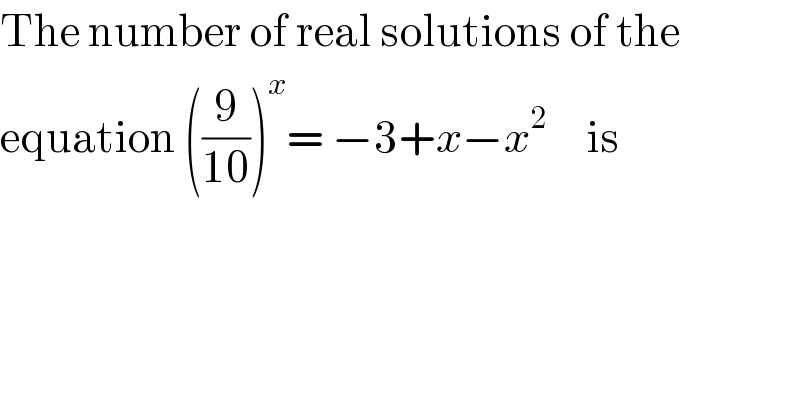
Question and Answers Forum
Question Number 62612 by hovea cw last updated on 23/Jun/19

Answered by tanmay last updated on 23/Jun/19
![−3+x−x^2 =−x^2 +x−3 =−(x^2 −x+3) =−(x^2 −2×x×(1/2)+(1/4)−(1/4)+3) =−(x−(1/2))^2 +(1/4)−3 =−(x−(1/2))^2 −((11)/4)<0 [always −ve] but ((9/(10)))^x >0 [aleays +ve] so no real solution](Q62619.png)
| ||
Question and Answers Forum | ||
Question Number 62612 by hovea cw last updated on 23/Jun/19 | ||
 | ||
Answered by tanmay last updated on 23/Jun/19 | ||
![−3+x−x^2 =−x^2 +x−3 =−(x^2 −x+3) =−(x^2 −2×x×(1/2)+(1/4)−(1/4)+3) =−(x−(1/2))^2 +(1/4)−3 =−(x−(1/2))^2 −((11)/4)<0 [always −ve] but ((9/(10)))^x >0 [aleays +ve] so no real solution](Q62619.png) | ||
| ||